 spring 1728, the Spanish government, impressed with the necessity of colonizing Texas, ordered that four hundred families should be sent thither from the Canary islands. They were to be transported in parties of ten or twelve families at a time—first to Havana, and thence to Vera Cruz, whence they were to proceed by land to Texas.
spring 1728, the Spanish government, impressed with the necessity of colonizing Texas, ordered that four hundred families should be sent thither from the Canary islands. They were to be transported in parties of ten or twelve families at a time—first to Havana, and thence to Vera Cruz, whence they were to proceed by land to Texas.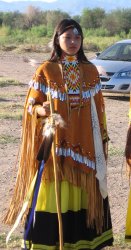
The government was to support them for one year. The Canary islands, lying near the coast of Africa, had been conquered by Spain in the latter part of the fifteenth century, and the Guanches, its former occupants (a race closely connected with the Berbers of northern Africa), totally extirpated.

Their places had been supplied by pure Spaniards, who were distinguished for regular habits, respect for females, and a rigid adherence to the catholic faith. With these advantages, it was believed that they would be good subjects, and supply the places of a licentious soldiery.

In the meantime, in anticipation of these imported citizens, and to relieve somewhat the royal treasury from the heavy expenses of the garrisons in Texas, a considerable reduction was made in the number of the forces stationed at the various forts. The post on the Neches was entirely suppressed; the force at the Adaes (Los Adaes was the capital of Tejas on the northeastern frontier of New Spain from 1729 to 1770. It included a mission, San Miguel de Linares de los Adaes, and a presidio, Nuestra Señora del Pilar de Los Adaes (Our Lady of Pilar of the Adaes). The site is located in the present-day Natchitoches Parish, Louisiana. The Los Adaes State Historic Site preserves the site. It has been designated a National Historic Landmark, the highest honor.)
was reduced from one hundred men to sixty, at the bay of St. Bernard from ninety to forty, and at San Antonio from fifty-three to forty-three—thus leaving, as the entire force of the three garrisons, only one hundred and forty-three men.
o
was reduced from one hundred men to sixty, at the bay of St. Bernard from ninety to forty, and at San Antonio from fifty-three to forty-three—thus leaving, as the entire force of the three garrisons, only one hundred and forty-three men.
o

When we consider that the different Indian tribes of Texas could at that period muster a force of ten thousand warriors; that the Spaniards were by no means their favorites; that the Apaches, and other tribes in the interior, were naturally warlike; and that the troops in the garrisons took little pains to secure their friendship—we shall see at once the bad policy of this reduction of the forces.
But they relied upon the friendship of the French, the good offices of St. Denis, and an early arrival of the new colonists. St. Denis, however, was otherwise engaged. The once-powerful tribe of the Natchez had been driven from the banks of the Mississippi, and was hanging in a threatening attitude around his position at Natchitoches.
They had determined to attack him; and, to prevent the Spaniards from giving him aid, had the address to stir up the Apaches to assail the post of Bexar, and thus bring on a general war between the Indians and Europeans.


The Apaches, originally of the same tribe with the Comanches, were possessed of like traits of character. They occupied the country between San Antonio and Santa Fe. Their principal villages, in 1730, were about the pass of Bandera(below), in the Guadalupe mountains, some fifty miles from the post of Bexar.


In 1730, the war broke out; but St. Denis conducted it very differently from the Spaniards. Rallying his small force in the garrison, together with the neighboring friendly Indians, he surprised the Natchez, killing many and dispersing the remainder. On November 28, 1729 after years of abuse by the French, the Natchez Indians attacked and massacred the French settlement at Fort Rosalie, (the present site of Natchez, Mississippi). Some of the fort’s inhabitants who were on hunting expeditions escaped the massacre.
Making their way to New Orleans they informed the French of the massacre and plans were put into place to send a military force to retaliate against the Natchez. Knowing a French armada was coming the Natchez abandoned their homeland to established defensive fortifications in nearby Louisiana.

About January 20, 1732 the Natchez Indians made their last stand on Sicily Island, Catahoula Parish, Louisiana where the French commander M. Perrier, found the Natchez entrenched. For three days his cannons maintained a nonstop bombardment of the Natchez.
On January 25th, the besieged Indians proposed terms, which were declined unless they first surrendered the "Great Sun" and the principal war chiefs. In desperation the Natchez were forced to agree to these terms. Surprised at this concession Perrier, with bad faith, demanded more.
Goaded to desperation the Natchez surrendered the "Great Sun", sixty men and two hundred women and children, on condition that their lives be spared and that Perrier withdraw his artillery. This proposition was answered by renewal of cannon fire until terminated at nightfall by a terrible storm of thunder, lightning, wind and rain. Under cover of this terrible storm, the remnant of the Natchez abandoned their position, escaping into the morasses of Louisiana.
The "Great Sun" and the chiefs that were taken prisoners were shipped to San Domingo and sold into slavery to defray the expense of the expedition. Thus bringing an end to the Natchez Nation.
The Spaniards acted on the defensive only; while the Apaches came down in parties, and committed murders and thefts with impunity.
Making their way to New Orleans they informed the French of the massacre and plans were put into place to send a military force to retaliate against the Natchez. Knowing a French armada was coming the Natchez abandoned their homeland to established defensive fortifications in nearby Louisiana.

About January 20, 1732 the Natchez Indians made their last stand on Sicily Island, Catahoula Parish, Louisiana where the French commander M. Perrier, found the Natchez entrenched. For three days his cannons maintained a nonstop bombardment of the Natchez.

On January 25th, the besieged Indians proposed terms, which were declined unless they first surrendered the "Great Sun" and the principal war chiefs. In desperation the Natchez were forced to agree to these terms. Surprised at this concession Perrier, with bad faith, demanded more.
Goaded to desperation the Natchez surrendered the "Great Sun", sixty men and two hundred women and children, on condition that their lives be spared and that Perrier withdraw his artillery. This proposition was answered by renewal of cannon fire until terminated at nightfall by a terrible storm of thunder, lightning, wind and rain. Under cover of this terrible storm, the remnant of the Natchez abandoned their position, escaping into the morasses of Louisiana.
The "Great Sun" and the chiefs that were taken prisoners were shipped to San Domingo and sold into slavery to defray the expense of the expedition. Thus bringing an end to the Natchez Nation.
The Spaniards acted on the defensive only; while the Apaches came down in parties, and committed murders and thefts with impunity.
From these strongholds they made their forays, not only upon the settlement at San Antonio, but extended their depredations across the Rio Grande. They had excellent horses, and were good riders ; they had also firearms (supplied them mostly by the French), and used them, as well as their bows, with great dexterity. They were inveterate thieves, and exceedingly treacherous, being ever ready to treat when the fight went ill, and as ready to break a treaty (below is an apache at the time of the first Spanish invaders)when they had a hope of the least advantage.

At the time of its occupation in the mid-eighteenth century, Presidio San Sabá was the lone bastion of Spanish authority on an otherwise unoccupied frontier. Both in physical size and by the size of its military force, it was the largest and most important military installation in Texas at that time. No wonder that it has been referred to by some as "the ruin of ruins."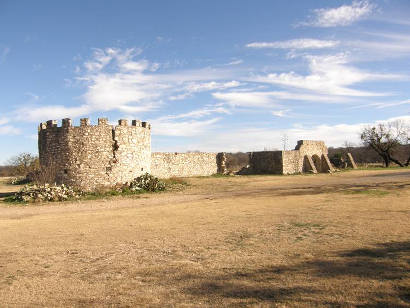

Apache is the collective term for several culturally related groups of real Americans in the United States originally from the Southwest United States.all plastic cavalry and indians plus buildings are TSSD from the USA, great range of stuff.unless otherwise stated These real Americans of North America speak a Southern Athabaskan(Apachean) language, which is related linguistically to the languages of Athabaskan speakers of Alaska and western Canada.
These real Americans of North America speak a Southern Athabaskan(Apachean) language, which is related linguistically to the languages of Athabaskan speakers of Alaska and western Canada.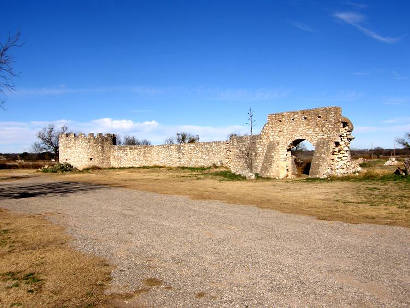 The Apache tribe occupied the mountains and plains of southern Arizona and New Mexico, and also in Mexico .below michtoy
The Apache tribe occupied the mountains and plains of southern Arizona and New Mexico, and also in Mexico .below michtoy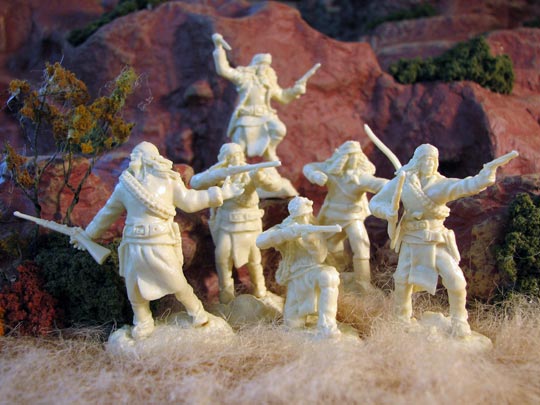
 These real Americans of North America speak a Southern Athabaskan(Apachean) language, which is related linguistically to the languages of Athabaskan speakers of Alaska and western Canada.
These real Americans of North America speak a Southern Athabaskan(Apachean) language, which is related linguistically to the languages of Athabaskan speakers of Alaska and western Canada. The Apache tribe occupied the mountains and plains of southern Arizona and New Mexico, and also in Mexico .below michtoy
The Apache tribe occupied the mountains and plains of southern Arizona and New Mexico, and also in Mexico .below michtoy
In the meantime, there arrived at Bexar thirteen families and two single men, conducted hither from the Canary islands by order of the king. Others came from the banks of Lake Teztuco; they were Tlascalans—sturdy republicans, whose ancestors the powerful Montezumas had not been able to conquer. Others, again, came from the new settlement of Monterey. These fresh colonists, uniting, laid the foundation of San Fernando, around the present plaza of the Constitution in San Antonio. This location answered admirably for irrigation.

This great addition to the small European population of Bexar gave an impetus to the missions, which was seen in the fact that more Indians were captured, and brought in to be civilized; and, on the 5th of March, 1731, was laid the foundation of La Purissima Concepcion de Acuna, which for many years afterward was a refuge for the savage and the stranger.
The new settlers, feeling themselves at home, and galled in person and property by the inroads of the Indians, made some incursions into their strongholds, but, at first, with no great success. In 1732, however, a more vigorous campaign was undertaken.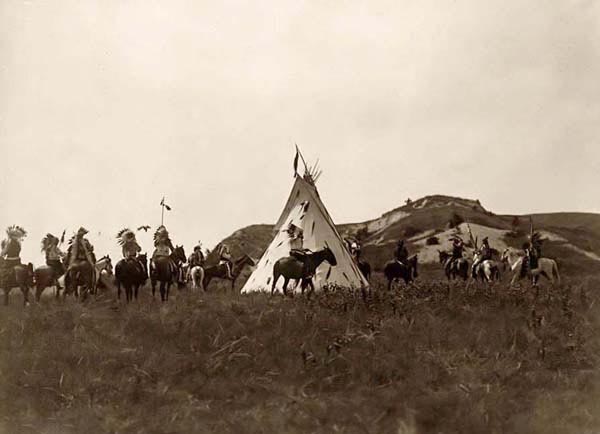

The Spaniards met them in battle, and defeated them. This victory gave peace and a temporary security to the colony, and substantial improvements were the result. Don Juan Antonio Bustillos y Cevallos, the governor, appeared to have at heart the welfare of the province, and, while he was prompt to chastise the Indians, he was equally zealous for their conversion.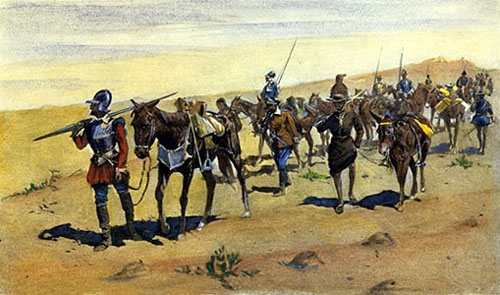

In the first of the year 1734, Don Manuel de Sandoval was appointed governor of Texas. He was an old soldier, and had served the king for more than twenty years, rising from the rank of a cadet to that of captain of grenadiers
. In 1727, he had been appointed governor of Coahuila, the duties of which office he discharged with satisfaction for seven years. This fact alone is a strong evidence of his popularity with the viceroy, as it was the policy of the superior government to change the governors of provinces at short intervals. His appointment to the gubernatorial office of Texas was one of the last official acts of the prudent, disinterested, and renowned Casa Fuerte, viceroy of Mexico. The Apaches had again become troublesome; and the viceroy selected Sandoval, not only for his integrity, but with instructions to chastise the Indians.
In 1727, he had been appointed governor of Coahuila, the duties of which office he discharged with satisfaction for seven years. This fact alone is a strong evidence of his popularity with the viceroy, as it was the policy of the superior government to change the governors of provinces at short intervals. His appointment to the gubernatorial office of Texas was one of the last official acts of the prudent, disinterested, and renowned Casa Fuerte, viceroy of Mexico. The Apaches had again become troublesome; and the viceroy selected Sandoval, not only for his integrity, but with instructions to chastise the Indians.
.
 In 1727, he had been appointed governor of Coahuila, the duties of which office he discharged with satisfaction for seven years. This fact alone is a strong evidence of his popularity with the viceroy, as it was the policy of the superior government to change the governors of provinces at short intervals. His appointment to the gubernatorial office of Texas was one of the last official acts of the prudent, disinterested, and renowned Casa Fuerte, viceroy of Mexico. The Apaches had again become troublesome; and the viceroy selected Sandoval, not only for his integrity, but with instructions to chastise the Indians.
In 1727, he had been appointed governor of Coahuila, the duties of which office he discharged with satisfaction for seven years. This fact alone is a strong evidence of his popularity with the viceroy, as it was the policy of the superior government to change the governors of provinces at short intervals. His appointment to the gubernatorial office of Texas was one of the last official acts of the prudent, disinterested, and renowned Casa Fuerte, viceroy of Mexico. The Apaches had again become troublesome; and the viceroy selected Sandoval, not only for his integrity, but with instructions to chastise the Indians.
Governor Sandoval immediately entered upon his duties; and, in pursuance of his instructions, made a campaign against the Apaches, and checked their depredations for some years. But, while he was engaged in his wars with the Indians, and in improving and consolidating the country under his charge, he became involved in a quarrel, first with St. Denis, and then with his own government, which gave him much trouble.
The primitive dress of the men was deerskin shirt, leggings, and moccasins. They were never without a loin-cloth. A deerskin cap with attractive symbolic ornamentation was worn. The women wore short deerskin skirts and high boot top moccasins.
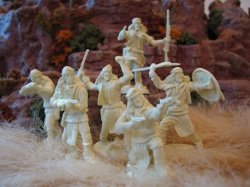
Chiricahua - southwestern New Mexico, southeastern Arizona, and adjacent Mexican states of Chihuahua and Sonora - The band was the informal political unit, consisting of followers and a headman. They had no formal leader such as a tribal chief, or council, nor a decision making process. The core of the band was a "relative group," predominantly, but not nessarily, kinsmen. Named by the Spanish for the mescal cactus the Apaches used for food, drink, and fiber.

No comments:
Post a Comment